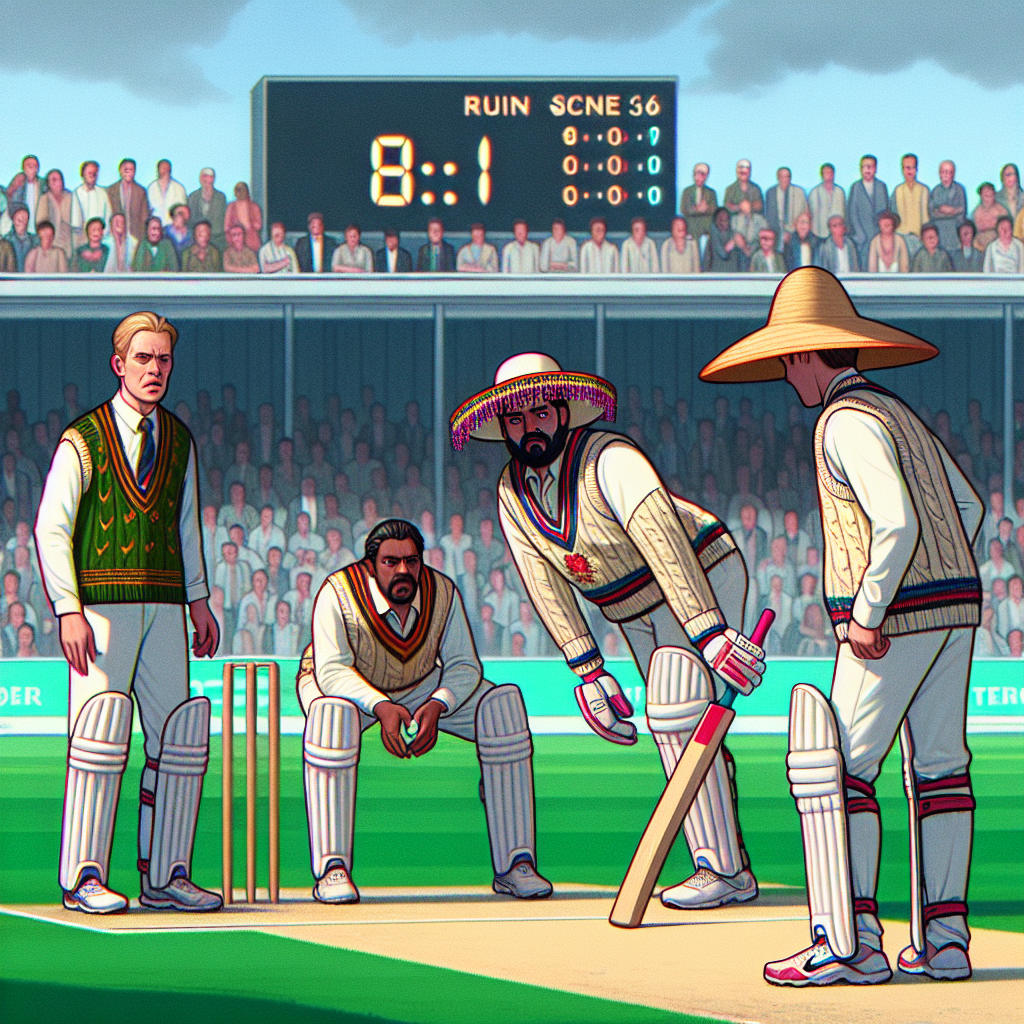Lowest Run in Cricket History: A Deep Dive into the Game’s Most Unforgettable Moments

Cricket, often referred to as a gentleman’s game, is a sport rich in history and tradition. While the game is celebrated for its high-scoring matches and thrilling finishes, it also has its share of low-scoring encounters that have left an indelible mark on the sport. This article explores the lowest runs in cricket history, examining the circumstances, key players, and the impact these matches have had on the game.
Understanding Low Scores in Cricket
Low scores in cricket can occur due to a variety of factors, including pitch conditions, weather, and exceptional bowling performances. These matches, while often short-lived, provide a unique insight into the strategic and unpredictable nature of cricket.
Factors Contributing to Low Scores
- Pitch Conditions: A pitch that offers excessive seam or spin can make batting extremely challenging.
- Weather Conditions: Overcast conditions can aid swing bowling, making it difficult for batsmen to score.
- Exceptional Bowling: Sometimes, a single bowler or a bowling unit can dominate proceedings with skill and precision.
- Pressure Situations: High-pressure matches can lead to batting collapses as players succumb to nerves.
Historic Low Scores in Test Cricket
Test cricket, the longest format of the game, has witnessed some of the lowest team scores in history. These matches are often remembered for their dramatic turn of events and the resilience shown by the bowling side.
New Zealand vs. England, 1955
One of the most infamous low scores in Test cricket history occurred during the second Test between New Zealand and England in 1955. New Zealand was bowled out for just 26 runs in their second innings at Eden Park, Auckland. This remains the lowest team total in Test cricket to date.
The English bowlers, led by Bob Appleyard and Frank Tyson, exploited the conditions perfectly. Appleyard took 4 wickets for 7 runs, while Tyson claimed 2 wickets for 10 runs. The New Zealand batsmen had no answer to the relentless pressure and skill of the English attack.
Australia vs. South Africa, 1932
Another notable low score occurred in 1932 when South Africa was dismissed for just 36 runs against Australia in Melbourne. Bert Ironmonger, the Australian left-arm spinner, was the chief destroyer, taking 5 wickets for 6 runs. This match highlighted the challenges of facing quality spin bowling on a responsive pitch.
Low Scores in One Day Internationals (ODIs)
While ODIs are generally high-scoring affairs, there have been instances where teams have struggled to put runs on the board. These matches often feature exceptional bowling performances and strategic brilliance.
Zimbabwe vs. Sri Lanka, 2004
In an ODI match in Harare in 2004, Zimbabwe was bowled out for just 35 runs against Sri Lanka. Chaminda Vaas, the Sri Lankan left-arm seamer, was instrumental in this collapse, taking 4 wickets for 11 runs. The Zimbabwean batsmen were unable to cope with Vaas’s swing and accuracy.
Canada vs. Sri Lanka, 2003 World Cup
During the 2003 ICC Cricket World Cup, Canada was dismissed for a mere 36 runs against Sri Lanka in Boland Park, Paarl. Prabath Nissanka and Chaminda Vaas were the stars with the ball, taking 4 and 3 wickets respectively. This match remains one of the lowest team totals in World Cup history.
Lowest Scores in T20 Internationals
T20 cricket, known for its explosive batting and high scores, has also seen its share of low-scoring games. These matches are often characterized by aggressive bowling and strategic field placements.
Turkey vs. Czech Republic, 2019
In a T20I match during the 2019 Continental Cup, Turkey was bowled out for just 21 runs against the Czech Republic. This remains the lowest team total in T20I history. The Czech bowlers, led by Sudesh Wickramasekara, dismantled the Turkish batting lineup with precision and skill.
Netherlands vs. Sri Lanka, 2014 World T20
During the 2014 ICC World T20, the Netherlands was dismissed for 39 runs against Sri Lanka in Chittagong. Ajantha Mendis and Angelo Mathews were the chief architects of this collapse, taking 3 wickets each. The Dutch batsmen struggled to handle the spin and pace of the Sri Lankan attack.
Impact of Low Scores on Cricket
Low-scoring matches, while rare, have a significant impact on the game of cricket. They serve as a reminder of the sport’s unpredictability and the importance of adaptability and resilience.
Lessons Learned from Low Scores
- Adaptability: Batsmen must adapt quickly to changing conditions and bowlers’ strategies.
- Resilience: Teams must remain resilient and focused, even when facing challenging situations.
- Strategic Planning: Captains and coaches must devise effective strategies to counter opposition strengths.
- Importance of Bowling: A strong bowling attack can turn the tide of a match, even when defending low scores.
Conclusion
Low scores in cricket, while often overshadowed by high-scoring encounters, are an integral part of the game’s history. They highlight the sport’s unpredictability and the importance of skill, strategy, and resilience. From Test matches to T20 internationals, these low-scoring games have provided some of the most memorable moments in cricket history. As the game continues to evolve, these matches serve as a reminder of the challenges and excitement that cricket offers to players and fans alike.



